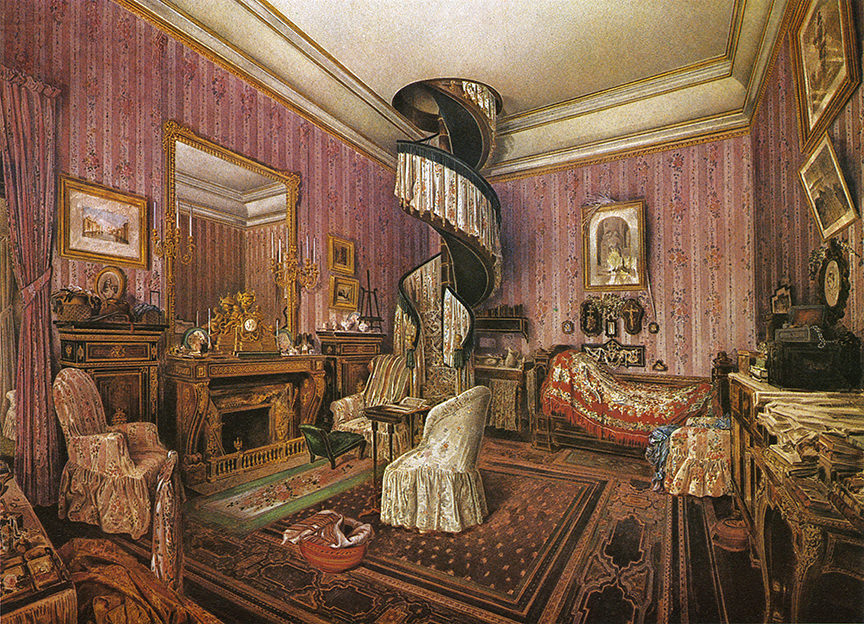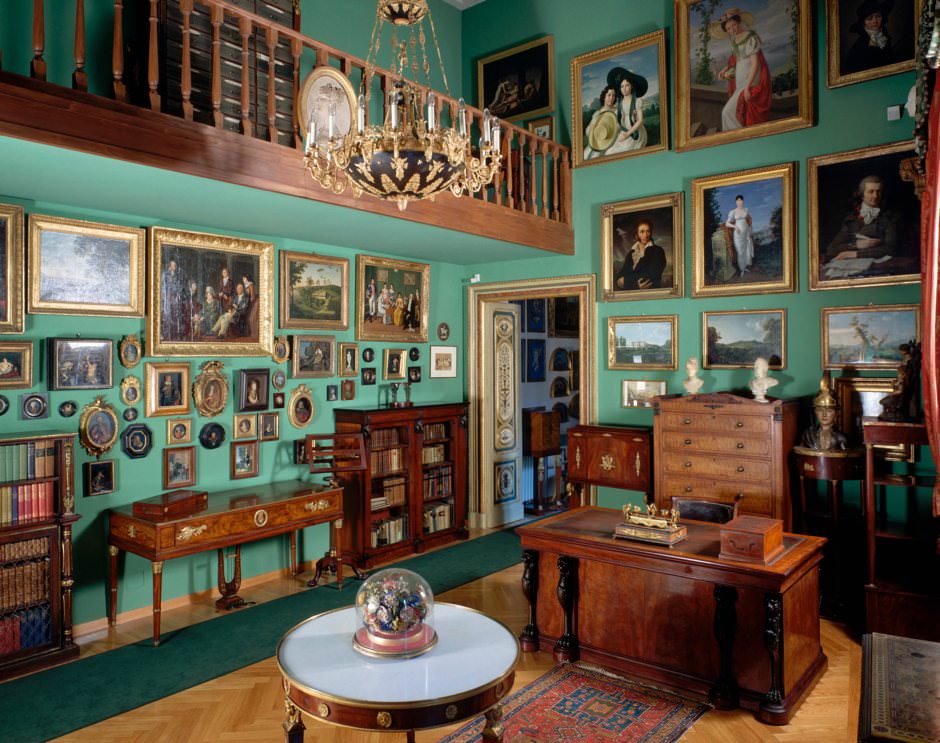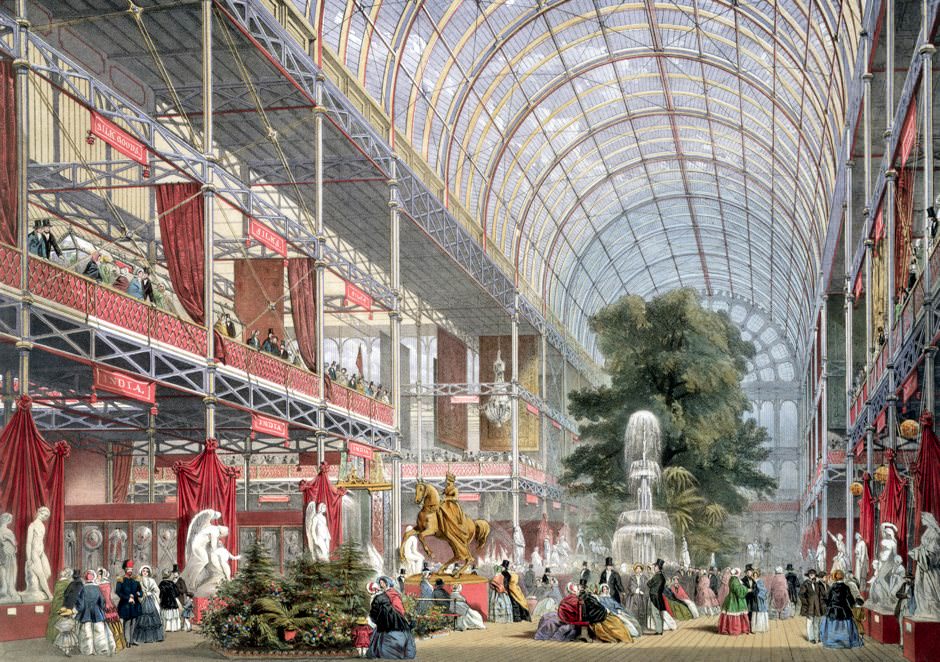Novelists have long been attuned to the psychology of interior design. Henry James in particular excelled at nuanced evocations of domestic settings and decorative objects that reflect his characters’ states of mind, as in “The Figure in the Carpet” and The Golden Bowl. But such connections were less common in nonfiction before the publication in 1958 of Mario Praz’s La casa della vita, which appeared (in Angus Davidson’s lustrous translation) as The House of Life a half-century ago this year.
Two new nonfiction books about interior spaces—one a reflection on the changing meaning of interior spaces from antiquity to the present by the British architect Edward Hollis; the other a memoir on self-furnishing a Nantucket house by the writer Sherry Lefevre—have, in different ways, reminded me just how enduring Praz’s influence has been. The House of Life, ostensibly a room-by-room, piece-by-piece tour through the writer’s antiques-filled apartment on the piano nobile of the Palazzo Ricci in his native Rome, is in fact a crypto-autobiography. This hybrid memoir mirrors the multifaceted Praz (1896-1982), who studied law but never practiced it, turning instead into an interdisciplinary prodigy—literary critic, cultural historian, multilingual pedagogue, and the twentieth century’s foremost authority on Neoclassical decorative arts.
Though it is now considered a classic, The House of Life received widely divergent reviews when it was published. Edmund Wilson hailed it as a “masterpiece—a book unlike any other.” Cyril Connolly dismissed it as “one of the most boring books I have ever read….It has a bravura of boredom, an audacity of ennui that makes one hardly believe one’s eyes.”
Although I concur wholeheartedly with Wilson, I can also understand Connolly’s response, for he was one of the many who cannot fathom the impulse to collect things in quantity. Thus he had a natural distaste for Praz’s lengthy and loving descriptions of his Empire period furniture, metalwork, ceramics, chandeliers, carpets, pictures, and sculptures. But how could Connolly have been wholly immune to the surprising, amusing, enchanting, and often quite touching digressions that frequently interrupt this obsessive household inventory?
While discussing some gueridon, poudreuse, or escritoire, Praz suddenly shifts to recollections that range from schoolboy follies to his troubled romantic history, from his two failed attempts to gain an Oxford professorship to life in Rome during wartime. This intellectual aesthete’s extraordinary powers of observation produce countless arresting characterizations, many alluding to the history of art. George Bernard Shaw “has a fine ruddy face like an old satyr by Jordaens.” In Warwickshire Praz encounters “a landscape like a Van Eyck background…so clear-cut, so calm, so translucent, as though air and meadows and water and foliage were made of precious stones.” And the outlandish Arts and Crafts get-up of William Morris’s daughter May suggests “a costume somewhere between that of a Hebrew priest and a Rumanian peasant-woman.”
Tellingly, he sidesteps the twin banes of his existence: a clubfoot, and the persistent accusation that he possessed il malocchio—the evil eye. Along with his forbidding squint, Praz’s deformity gave him a baleful affect that his superstitious countrymen equated with an imagined ability to inflict harm with a gaze. Stories abound of sudden disasters (and even deaths) that allegedly occurred in Praz’s presence or wake. It was all nonsense, of course, but the libel cast a shadow over his life and thus attained its own malevolent reality. No wonder he retreated into an interior landscape he could control absolutely. Praz admitted that he related much better to things than to people, but the life he brings to inanimate objects adds special poignancy to his revelation of thwarted emotions.
The extent to which Praz has affected attitudes toward the psychology of decorating is apparent in Edward Hollis’s The Memory Palace: A Book of Lost Interiors—a sequel to The Secret Lives of Buildings (2009). In his new book, Hollis acknowledges that he has been “provoked by the words of Mario Praz.”
Hollis’s six chapters (Architecture, Furniture, Objects, Decor, Commodities, and Images) each comprise five short essays that delve into the inner meaning of interior spaces as disparate as Marie Antoinette’s mirrored boudoir at the Petit Trianon and his grandmother’s middle-class suburban London house. In “Commodities” he addresses a lesser-known aspect of Joseph Paxton and Charles Fox’s Crystal Palace of 1850-1851 in London, the prefabricated iron-and-glass Great Exhibition hall often deemed the foundational work of modern architecture. Instead of oft-told-tales about the building’s genesis, Hollis relates how the excretory needs of the exposition’s six million visitors were accommodated by innovative locked lavatories that opened when a coin was inserted—hence “spend a penny,” a British euphemism for relieving oneself.
Advertisement
Sherry Lefevre, who teaches writing at Philadelphia’s University of the Arts, spent childhood summers in the Nantucket village of Siasconset at a rented early-nineteenth-century house called Rosemary. As Lefevre writes in her engaging book The Nantucket House That eBay Built, this quirky but atmospheric retreat became her Rosebud, an emblem of innocence lost when, in the mid-1960s, her parents forswore family vacations because their teenaged sons had become too obstreperous for a restful holiday together.
Some years later Lefevre’s parents bought a modern ranch-style house on the island, but things were never the same for her. When the aged couple sold the place and divided the proceeds among their children, the author purchased a pleasingly unrestored circa-1820 house in the island’s eponymous port town and proceeded to turn it into a spiritual reincarnation of her beloved Rosemary.
The Nantucket House that eBay Built is by turns nostalgic memoir, archival local history, practical renovation manual, traditional home furnishings primer, and how-to guide for navigating eBay, Lefevre’s principal source for everything from beds to board games. Her ideas about properly decorating a seaside house are every bit as definite as Praz’s precepts for palazzi, if hardly as rarefied.
She favors faded old chintzes, mismatched vintage china, jelly-jar glasses, nautical pictures, shell-encrusted bibelots, tramp-art carvings, hooked rugs, folksy dioramas, taxidermy, and chenille bedspreads— all talismans of her unforgettable idyll as an impressionable ten-year-old. As she writes, “Whether simply by the power of association, or as I suspect, her much deeper affinity with the essential otherworldliness of vacation, Rosemary became the smile of summer to me.”
Lefevre wanted to create an “heirloom house” saturated with the authentic aura of age and experience. In that regard she is no different from her stylistic antithesis Praz, who likewise sought the elusive quality he referred to as Stimmung—the German word for mood or atmosphere. In his best-known work, An Illustrated History of Interior Decoration (1964), he poetically sums up his fascination with how we arrange our rooms:
The surroundings become a museum of the soul, an archive of its experiences; it reads in them its own history, and is perennially conscious of itself; the surroundings are the resonance chamber where its strings render their authentic vibration. And just as many pieces of furniture are like moulds of the human body, empty forms waiting to receive it…so finally the whole room or apartment becomes a mould of the spirit, the case without which the soul would feel like a snail without its shell.
Edward Hollis’s The Memory Palace: A Book of Lost
Interiors was
recently published by Counterpoint Press. Sherry Lefevre’s The Nantucket House
That eBay Built is
available
from the iTunes site. A reprint
edition of Angus Davidson’s
translation of Mario Praz’s The House of Life was published by David Godine in
2010.





